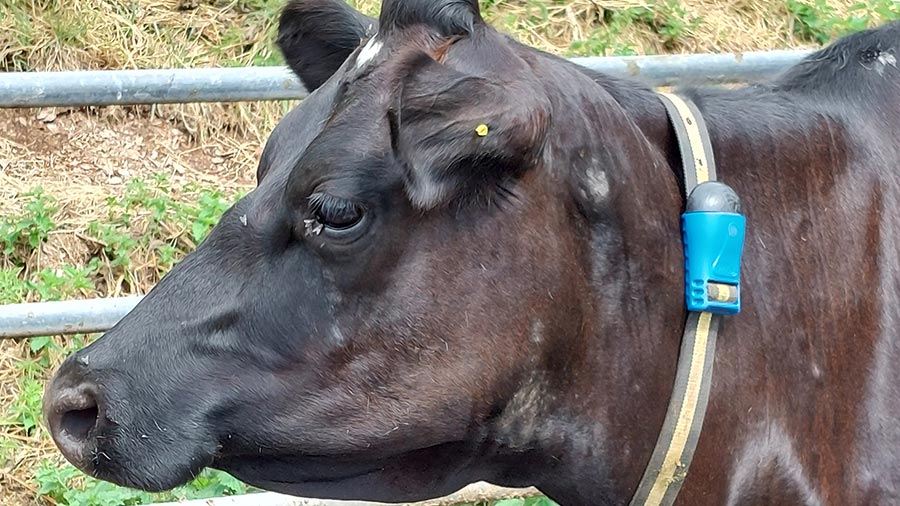Block calvers ditch tail paint for time-saving tech
 © MAG/Shirley Macmillan
© MAG/Shirley Macmillan Automatic heat detection systems could be in 90% of autumn block-calving herds and 70% of spring herds within four to five years, says LIC consultant Piers Badnell.
Replacing tail paint with technology to identify bulling cows is being driven by the difficulty in finding enough skilled labour, not just growing herd size in the 20% of GB herds that block-calve.
While year-round-calving herds have used automatic heat detection for years, in a system that famously focuses on simplicity and low cost, block-calving farmers are now seriously considering the cost benefits.
See also: Why heat detection collars save time in an autumn-block herd
“The technology is very accurate and it means not having to go out to check cows at night. This makes life easier and is better for staff,” says Piers.
Saving time on manual checks also enables staff to give more attention to other tasks.
“Everyone should do pre-breeding checks for one month, but they don’t – it’s hard work after 12 weeks of calving. This [technology] allows you to do it.
“But automatic systems do more than heat detection. They pick up problems before people do, plus you have the additional information on cow health.”
In larger teams, automation also removes variation in heat detection and is consistent when there is a changeover of staff, says Piers.
Cost
The technology is delivered via collars or ear tags, starting from £98/collar plus hardware.
Payment method depends on whether the farm owner wants to buy outright or pay monthly.
Split-block businesses can share collars between the spring- and autumn-calving groups. Economies of scale or buying deals through groups make the investment more attractive.
“The key thing is to choose auto-drafting with the system you put in so it ‘talks’. This releases one person from the parlour and you just have one milking,” says Piers.
He thinks the return on investment is “fantastic” through picking up non-cycling cows before breeding.
“Use it properly and I reckon you’ll get your money back within a year – definitely well within the five to six years [of product lifespan].”
